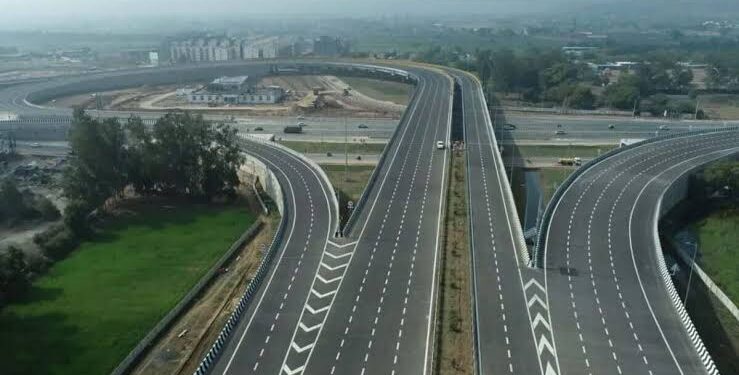In a significant move to reduce travel costs, the Indian government has cut toll rates by up to 50% on National Highway sections featuring structures like bridges, tunnels, flyovers, and elevated stretches. This reform, effective from July 2, 2025, amends the National Highways Fee Rules, 2008, and introduces a new formula for calculating toll charges. Here’s a detailed look at the policy, its implications, and how it impacts commuters, particularly on routes like the Delhi-Jaipur Bandikui Spur.
The New Toll Calculation Formula
The Ministry of Road Transport and Highways (MoRTH) has revised the toll calculation method to make highways with costly infrastructure more affordable. Previously, commuters paid ten times the regular toll rate per kilometer for structures like bridges or tunnels to offset their high construction and maintenance costs. The new rule, notified on July 2, 2025, calculates tolls based on the lesser of:
- Option 1: Ten times the length of the structure(s) plus the length of the non-structure highway section.
- Option 2: Five times the total length of the highway section, including structures.
Example: For a 40-km highway section entirely comprising a structure (e.g., a bridge):
- Old rule: Toll calculated for 10 × 40 = 400 km.
- New rule: Toll calculated for 5 × 40 = 200 km, effectively halving the cost.
This change ensures tolls are capped at a maximum of five times the section’s length, reducing charges by up to 50% for structure-heavy routes. A “structure” is defined as an independent bridge, tunnel, flyover, or elevated highway.
Impact on Commuters
The toll reduction benefits millions of motorists, particularly on highways with significant infrastructure, such as:
- Delhi-Mumbai Expressway: Including the Bandikui-Jaipur Spur, where tolls for the 66.9-km stretch (initially ₹150) and the full Delhi-Jaipur trip (₹680–₹690) may see reductions post-trial.
- Dwarka Expressway: Previously ₹317 one-way, now potentially halved for structure-heavy sections.
- Other Routes: Highways like the Chennai-Bengaluru Expressway or those with tunnels in hilly regions will also see lower tolls.
A senior NHAI official noted that the policy balances infrastructure cost recovery with affordability, encouraging greater highway usage. Additionally, the FASTag-based annual pass (₹3,000, effective August 15, 2025) for private vehicles offers up to 200 trips or one year of validity, further easing costs for frequent travelers.
Context: Bandikui-Jaipur Spur
The recently opened Bandikui-Jaipur Spur (66.9 km, completed July 2, 2025) on the Delhi-Mumbai Expressway exemplifies the impact of this policy. Currently in a 10-day toll-free trial (ending ~July 12), the spur reduces Delhi-Jaipur travel to 2.5–3 hours. Post-trial tolls are estimated at ₹150 for Bandikui-Jaipur and ₹680–₹690 for Delhi-Jaipur. The new formula could lower these further if the spur includes significant structures, though specific calculations depend on the length of bridges or flyovers (e.g., Khuri interchange).
Additional Context and Benefits
- Economic Impact: Lower tolls could reduce logistics costs by 20–30%, stabilizing market prices for goods and boosting freight efficiency.
- Commuter Savings: For frequent travelers, savings could amount to thousands of rupees annually, especially with the ₹3,000 annual pass.
- Policy Alignment: The reform complements initiatives like GNSS-based tolling (offering 20 km toll-free daily) and the Bandikui Spur’s trial phase, reflecting MoRTH’s focus on affordability.
Challenges and Considerations
- Implementation: Toll plazas must update systems to reflect the new formula, which may delay full rollout.
- Revenue Impact: Reduced tolls could strain NHAI’s revenue, potentially slowing future infrastructure projects unless offset by increased traffic.
- Exemptions: Two-wheelers remain exempt from tolls, as clarified by NHAI, addressing recent misinformation.
Conclusion
The government’s July 2, 2025, amendment to the NH Fee Rules, 2008, marks a commuter-friendly shift, slashing tolls by up to 50% on National Highways with bridges, tunnels, and flyovers. By capping tollable distances at five times the section length, the policy reduces travel costs, as seen on routes like the Bandikui-Jaipur Spur. Commuters should monitor NHAI updates for toll implementation post-trial and consider the ₹3,000 annual pass for further savings. This reform enhances affordability while supporting India’s world-class highway network.
Disclaimer: This article is for educational purposes and does not constitute travel or financial advice. Verify toll rates with official NHAI sources.

